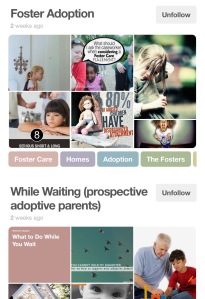You may have heard about a new Netflix series titled 13 Reasons Why, which is based on the novel by Jay Asher. The series portrays the story of a 17-year-old girl who takes her own life and leaves behind 13 recordings explaining the reasons (and persons) that contributed to her suicide. This show is rated TV-MA (not appropriate for children under 17) but we are aware that younger children are watching it as well. Even children who have not seen the show have likely heard about it at school. Due to the show’s popularity and mature content which includes scenes involving drugs, bullying, rape and suicide, we felt it was important to inform our clients of this social trend.
We strongly encourage you to consider the age, emotional health and developmental stage of your child before allowing them to watch. While the makers of the show have expressed the goal of raising important issues, there are concerns that it glamorizes suicide.
We also know that teens who were adopted have an attempted suicide rate that is higher than their non-adopted peers. Of course, this doesn’t mean that ALL adoptees are depressed or have suicidal ideations – but it is true that those who were adopted have different, hard and confusing things to cope with and assimilate into their identities. These hurts, struggles and curiosities can make it all the more hard for an adoptee to reach out with questions or requests for help. The complexities of adoption might need to be part of your conversations about suicide in adoptive family homes.
We feel that children with a genetic risk factor for depression or a family history of suicide may be particularly vulnerable to this show’s messaging and imagery. Any teen who’s experienced a sexual assault should avoid the show, as those scenes will likely serve as emotional triggers. Be especially careful when considering whether children who have a history of suicidal thoughts, depression or mental health concerns should watch 13 Reasons Why.
If your child is watching this series, we recommend you watch it with them and discuss it afterward. Follow-up conversations provide a good opportunity to talk with your child about important issues such as stress, depression, bullying, peer pressure and suicide. This can include how to support a struggling friend, or about their own feelings. If your child is expressing warning signs, don’t be afraid to ask them directly how they are feeling about suicide. We do know that an open conversation is the most important factor in suicide prevention.
You talk to your children about behaviors which can put them at personal risk -and suicide is no different. It’s something you CAN and SHOULD talk about with your children! Contrary to myth, talking about suicide CANNOT plant the idea in someone’s head. It can actually open up communication about a topic that is often kept a secret. And secrets that are exposed to the rational light of day often become less powerful and scary. Through conversation, you also give your child permission to bring up the subject again in the future. Approach this topic in the same way as other subjects that are important to you, but may or may not be important to your child.
Remember:
- Timing is everything! Pick a time when you have the best chance of getting your child’s attention.
- Think about what you want to say ahead of time and rehearse a script if necessary.
- Be honest. If this a hard subject for you to talk about, admit it! (“You know, I never thought this was something I’d be talking with you about, but I think it’s really important”). By acknowledging your discomfort, you give your child permission to acknowledge his/her discomfort, too.
- Ask for your child’s response. Don’t do all the talking. Ask open-ended questions.
- Be direct! (“What do you think about suicide?”; “Is it something that any of your friends talk about?”; “The statistics make it sound pretty common. Have you ever thought about it? What about your friends?”)
- Listen to what your child has to say. You’ve asked the questions, so simply consider your child’s answers. If you hear something that worries you, be honest about that, too (“What you’re telling me has really gotten my attention and I need to think about it some more. Let’s talk about this again, okay?”)
- Don’t judge. And do not offer quick solutions or fixes.
- Don’t overreact or under react. Overreaction will close off any future communication on the subject. Under reacting, especially in relation to suicide, is often just a way to make ourselves feel better. ANY thoughts or talk of suicide (“I felt that way a while ago but don’t any more”) should raise a flag for concern and follow-up.
Here are some possible warning signs that should get our attention:
STATEMENTS that convey a sense of hopelessness, worthlessness, or preoccupation with death (“ Life doesn’t seem worth it sometimes.”; “I wish I were dead.”; “Heaven’s got to be better than this.”)
BEHAVIORS that are different from the way your child acted in the past, especially things like talking about death or suicide, taking dangerous risks, withdrawing from activities or sports, or using alcohol or drugs.
FEELINGS that, again, seem different from the past like irritability, anxiety, sadness, hopelessness, loss of interest.
SITUATIONS that can serve as ‘trigger points’ for suicidal behaviors. These include things like loss or death, getting in trouble at home, in school, or with the law, or impending changes for which your child feels scared or unprepared.
If you notice any of these things in kids who have always been impulsive, made previous suicide attempts or threats, or seem vulnerable in any way, you really should get consultation from a mental health professional.
The 24/7 number for the National Suicide Prevention Lifeline: is 1-800-273-8255. Put it in your phone. We hope you never need it for yourself or for anyone else, but we hope you have it if you do. Our social workers are always here to support our families ~ please never hesitate to make inquiry if we can be of use to you.








